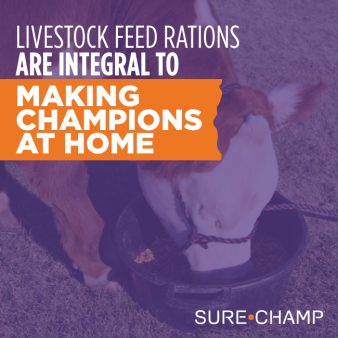Showing Pigs Showing pigs is a great family project. Young livestock enthusiasts get to meet new friends, travel to different places they have never been before, and spend time with their family and friends. Showing pigs teaches young people the responsibility of caring for another living being. It involves daily feedings, washing, exercising and forming […]
Tag: Feeding Strategy
A Guide to Show Cattle Nutrition
Show Cattle Nutrition Show cattle nutrition is a lot more complex than taking a feed scoop and filling a feed pan. You want to make sure your show cattle have the balanced nutrition they need. A balanced show cattle ration includes protein, energy, fat, vitamins and minerals, fiber, and supplements. Additionally, you will want to […]
Livestock Feed Rations are Integral to Making Champions at Home
Livestock Feed Rations Ask anyone who shows livestock what the hardest part is to get one ready, and the answers will likely vary. Some might say breaking an animal to lead or drive. Others might say working hair and skin. Yet other livestock exhibitors will tell you that having one dialed in on show day […]
Sure Champ® Ration Builder Offers Versatility
In the cattle industry, there are a lot of variables. Producers and show cattle exhibitors get great choices of genetics to select from, environments to live in and feed companies to purchase from. However, when it comes to your cattle’s nutrition, one thing remains constant. Every person should desire the highest quality nutrition including a […]
Feeding for Success: Sure Champ® Offers Practical Supplements for Show Livestock
A new year means setting new goals. However, with all livestock projects, the goal remains the same – to keep your animals eating and drinking so they gain and perform to their highest potential to capture as many wins as possible. The Sure Champ line of supplements was designed to proactively help livestock #PreptoWin during the challenges created by the […]
3 Tips to Starting Cattle Projects on the Feed
The crisp feeling in the air, calendars flipped to September and kids back in school are good indicators of shopping for your next show calf projects. It doesn’t matter if it’s your first calf or not, each project starts with anticipation of a new show season and a set of new goals and shows to […]





